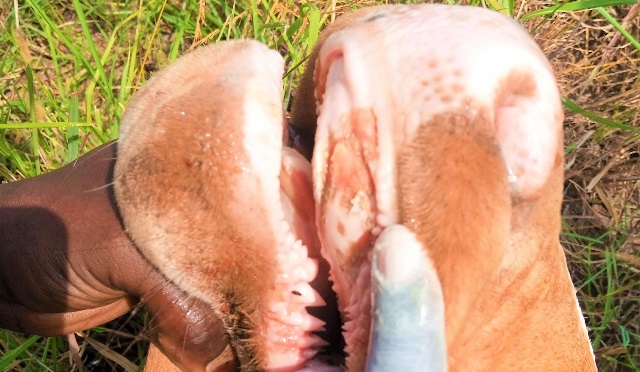
Nwoya, Uganda | THE INDEPENDENT | Nwoya District Veterinary department has commenced the vaccination of cattle to avert the possible spread of Foot and Mouth Disease (FMD).
The move follows the suspected outbreak of the highly viral livestock disease at a farm adjacent to River Nile in Nyamokino Parish, Lungulu sub-county two weeks ago.
According to veterinary officials, more than 50 cattle reportedly presented with signs and symptoms of the disease at the livestock farm.
Dr. Isiah Odokorach, the Nwoya District veterinary officer says the ring-fencing vaccination drive is being conducted in neighboring areas where the suspected cases were reported.
Odokorach says at least 2,000 cattle have so far been vaccinated in the exercise expected to end by January.
The district received 8,000 vials of FMD vaccines from the Ministry of Agriculture, Animal Industry, and Fisheries last month to undertake the vaccination.
However, following the suspected FMD outbreak, veterinary officials picked samples from some of the infected animals for a test.
But Odokorach notes that the results haven’t yet been released and suspects the delays could be due to the festive season.
“We are yet waiting for the test result to confirm whether there is an outbreak or not,” he told Uganda Radio Network in an interview Friday.
Christopher Omara, the Nwoya Resident District commissioner said Sunday that the vaccination exercise will be extended to the rest of the sub-counties in the district to ensure no cases spill outside Lungulu sub-county.
“The vaccination is already ongoing in the affected area. We shall conduct this in the entire district to keep our cattle safe from the possible spread of the disease as we wait for the results of samples,” says Omara.
Nwoya district registered FMD outbreak in July 2021 in the sub-counties of Purongo and Anaka, where over 20 cattle died from the viral disease. MAAIF later imposed a quarantine that lasted for seven months and was lifted in January last year.
FMD affects cattle, swine, sheep, goats, and other cloven-hoofed ruminants and presents with symptoms of a high temperature, and blisters in the mouth and on the feet of the livestock.
*****
URN
 The Independent Uganda: You get the Truth we Pay the Price
The Independent Uganda: You get the Truth we Pay the Price


